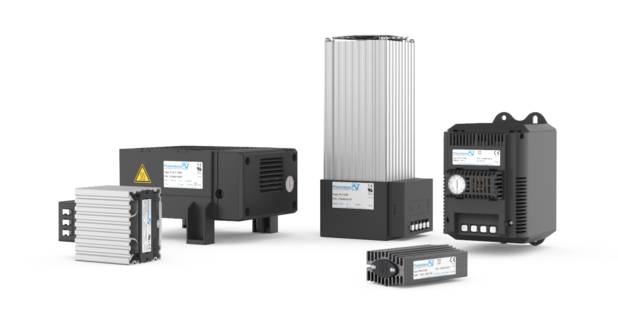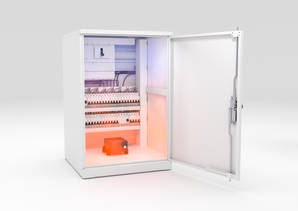Control cabinet heaters: For many, just a cuboid designed to ensure that critical components in control cabinets or electronics enclosures don't get too cold. Oh yes, and of course that no condensate is formed. Electrical components don't like that, of course! If one has recognized that a heating must be already, the following questions follow: How many watts are needed? Where is the space? Is the solution worth the price?
To calculate how much heating power is nominally needed to ensure a minimum temperature in an enclosure, most manufacturers offer calculation programs (see Pfannenberg Sizing Software). Knowing some environmental values of the installation site and material values of the enclosure, a value can be determined quickly.

However, to be sure that condensate is avoided, another consideration is necessary. Namely, which represents the unfavorable pairing of relative humidity and temperature to which the case is exposed. In this way, one can see to what extent larger temperature differences (even if it is relatively warm outside the enclosure) must be avoided in order to prevent condensation from forming.
It is also important that the heat reaches all components in the enclosure. In general, it is advantageous to place the heater near the floor to take advantage of natural convection (e.g. FLH-T, see Figure 2). When placing heaters, not only their dimensions should be considered, but also the distances to adjacent components and electrical connections.
In addition to clarifying placement, there is the question of how long the heater should operate and under what circumstances. Radiant heaters run forever, but are limited in maximum heat output and warm air distribution. Fan heaters, on the other hand, have a component in the form of the fan, the running time of which is very dependent on quality. At Pfannenberg, we build on quality components whose quality promise is backed up by design and quality assurance measures as well as certifications.
Fan heaters are therefore not just cuboids with certain dimensions and a heating capacity. The correct use of reliable components avoids condensation-related damage and corresponding follow-up costs.
You can find our technical advice and suitable products here: Heaters - Pfannenberg.

